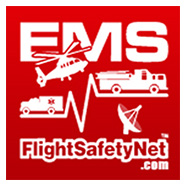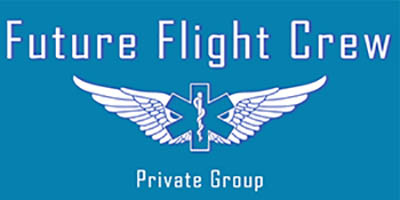IDAHO — A few of the Air St. Luke’s crew members went through a difficult situation as they were called to rescue an injured hiker.
As reported by KMVT, “This was the first time I’ve had a call like this,” said Kenna Olmsted, a flight nurse for Air St. Luke’s.
In Olmsted’s eight years of working for the hospital, she’s never gone to a call like this.
Around 4 p.m. Wednesday, they were called to a report of an injured hiker in the Pioneer Mountains near Mackay in Custer County.
When the crew received the coordinates, she said it took them about 30 minutes to actually locate the patient.
“There was no direct communication there and the person that was with the patient was using a satellite phone to call out and actually had to climb the ridge to use that satellite phone. The contact with that person was intermittent,” she said.
When they did locate the patient, there was no “good” place for the helicopter to land.
“We train to do hover exits and that’s what we decided to do to get close enough to the patient that we could treat him,” she said. Hover exit means when the helicopter gets low enough to the ground that crews can jump out of the aircraft.
After exiting the plane, Olmsted said she and her partner hiked about 900 yards on the steep, rocky terrain to find the patient.
“The patient had fallen about 40 feet, was what they estimated, sliding down rock and we made contact probably about 5:50 in the evening,” she explained.
They then treated the patient and tried to figure out how they will be getting him out of the area.
They called another rescue team, Two Bear Air that is out of Montana, to do a high-angle rescue.
“They had a two hour ETA to our location,” she said.
Meanwhile, the pilot for Air St. Luke’s that evening had to be switched out per FAA regulations.
“We were dealing with fuel limitations since it took us time to locate the patient and also, pilot time-out limitations,” she explained.
So the helicopter went back to base in Twin Falls while Olmsted and her partner were treating the patient.
Around 9:30 that night, she said Two Bear Air arrived and performed a hoist operation. They attempted to make passes several times and then the wind changed.
“The way the winds are in those mountainous regions, they kind of swirl and it was a little bit higher than what was safe for the patient to get out,” she said.
During that time, they had to make the decision whether they would keep the patient sheltered and warm with them on the mountain, or try to get the patient out of the mountains and to the hospital.
Olmsted said the patient wanted to get out. So Olmsted, two other Air St. Luke’s first responders and a crew member from Two Bear Air went down the terrain to a safer place where Two Bear Air could pick up the patient.
After helping the patient down to a safer terrain, Two Bear Air was able to take him back to St. Luke’s Magic Valley.
As Olmsted and one of her other partners tried to get to the helicopter that was trying to make passes to get them, the wind had changed.
“The winds had picked up and it felt unsafe for the helicopter to be there at that time, so I waved him off the mountain and he relocated to where the Two Bear helicopter was where my paramedic partner and the patient,” she explained.
Her partner, Bill, who went with her at the time had some battery life on his cell phone.
“Found a spot, amazingly enough, and could text a couple words, and so we just got word at that point they were going to come back at first light,” she explained.
The two did have survival gear on hand, as they are trained for any situation that could rise as well. They stayed on the mountainside overnight.
“With our warm weather gear and our blanket and the different things to help us, we do have equipment to build a fire but there was no way to build a fire. It was a rock face. So there was no way for us to do that. And, to put a tent up, wouldn’t have worked either, just because of the wind,” she said. “So we just sheltered by a rock with our warm weather gear and just waited for it out.”
The next morning at about 5:30 a.m., she said Air St. Luke’s did a preflight check and saw there was some damage to the helicopter during the nighttime operation.
She said her and her partner decided to hike down about two and a half hours into the valley and waited for a helicopter from Boise to pick them up at 9:30 in the morning.
“Even with all the training, I think it’s really hard to appreciate the noise and other limitations that happen when you’re working in and around a helicopter,” she said. “Those were all factors that played into that night into trying to keep everyone safe as you’re dealing with very loud noise, you’re dealing with darkness.”
One of the issues they ran into was communication with their pilot.
“Some things we’ve talked about are maybe putting a spot locator in our survival pack that turns every cell phone into a satellite phone. I know I personally will be carrying an extra battery in my flight suit and then maybe extra batteries for the radios that we use,” she said.
After this specific situation, she said everyone at Air St. Luke’s have learned something.
“We’re going to take what we’ve learned from this call and moving forward, we’re going to use it to make positive changes in our company,” she said.
[divider style=”9″]
Interested in learning more about how to get started as a Flight RT, Flight Medic, Flight Nurse or EMS Pilot?
Join our Future Flight Crew Private Facebook Group. Answer 3 simple questions to join, takes less than a minute.
CLICK THE BANNER to Sign Up:
[arrows style=”arrow-red-11.png” align=”left”]



